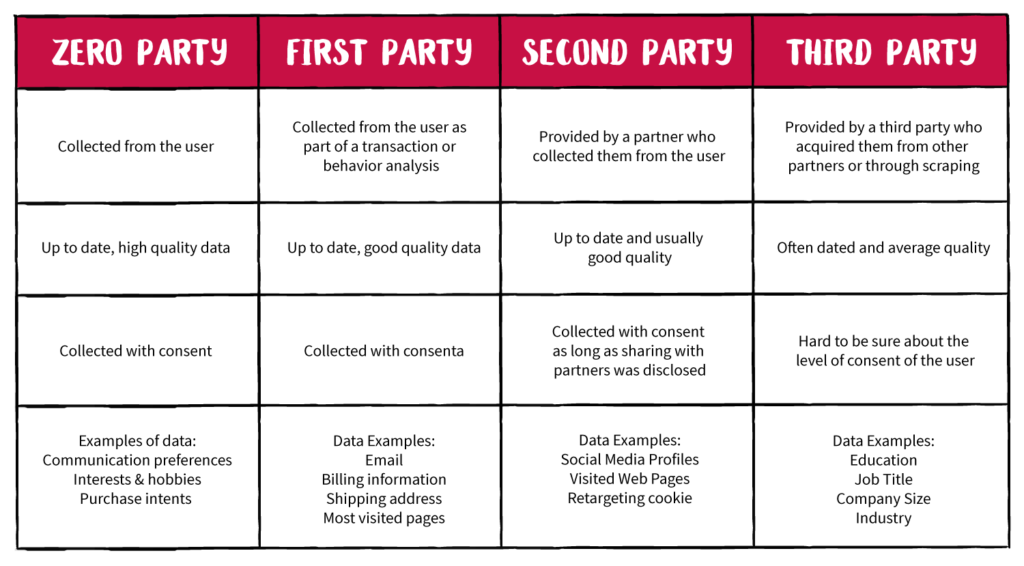Forrester Research was the first to coin the term “zero match data”; that is, data that a customer intentionally and proactively shares with a brand or publisher, including preference center data, purchase intentions, personal context, and how the individual desires the brand; to recognize them.
How do you collect zero-party data?
Reputable publishers like The Drum, Forbes, New York Times, Washington Post, or The Wall Street Journal allow their readers to view relevant content and articles only after filling out some specific details, e.g., B. by asking them to fill out a short preference survey or entering an email id.
Even pop-up subscription formats offer better value in exchange for zero-party data. For example, ask users for key demographic information like gender, age, marital status, income, and industry name to show less intrusive and more targeted ads. Another option could be to offer customization options in the registration forms.
For example, allow users or viewers to choose the topics they want to read about (politics, entertainment, travel, technology, food, and more). In addition, ongoing polls, quizzes, and additional interactive features provide opportunities to gather information. the user.
Creating a soft firewall that forces users to log in when they want to read more is a good initiative to collect zero-party data.
What is Protected Data?
First-party data is data collected directly from your specific audience, rather than being sourced and submitted from an outside source. These details reflect a specific audience. Some sources may collect first-party data from subscription-based emails or products, CRM, customer feedback, website and app analytics, surveys, or social media profiles.
While third-party data is data that your customers intentionally and intentionally share with you. They can include information such as purchase intentions, personal context, communication preferences, and how customers want to be recognized by the brand.
A good way to collect zero-party data is to solicit information in exchange for something valuable to the customer. Third-party data involves direct interaction with your audience. On the other hand, first-party data provides analytics information and user behavior.

What is Third-Party Data?
Third-party data is a type of data that you receive from a trusted partner. In most scenarios, you know the partner and it’s a viable source, meaning you know the data quality, relevance, and accuracy.
However, data from third parties cannot be obtained directly. Instead, you should establish a close relationship with another company or source and negotiate a data-sharing agreement.
Allows access to specific, niche, and specialized data. Compared to third-party data, the quality is better but has a shorter range.
You can always maintain a strategic pool for data collection through a private association; it can be ideal for reaching specific markets with a new brand alignment or product launch.
Third-party data is obtained via a specific data aggregator. Data aggregators do not accumulate data directly but acquire it from multiple companies and store it in a single dataset.
The outcome is that the data can come from various data sources, some significant, mid-sized, and minor sources; hence, there’s not always a clear definition of the accurate audience or customer in it.
Maximum third-party data is purchased via a Demand-side platform (DSP) or Data Management Platform (DMP) for advertising.
There are also multiple third-party data sources, DSPs, and DMPs including Acxiom, Nielsen, Google, Deloitte, Oracle, and more.
Conclusion
Website visitors, users, and customers knowingly provide third-party data to a company. As you know, relying on third-party data has an end date as Google says goodbye to its third-party cookies.
Leave first-party data as the only viable option for publishers to monetize their content. However, it’s not always easy to ask for someone’s email address. That’s why third-party data is critical.
Publishers can aggregate their user data without violating data protection laws and still provide personalized user experiences. Publishers have weathered many upheavals in the digital world and we can certainly stay strong.
Build a position of strength with insightful customer data. Viewers and users want to interact with publishers on occasion to improve their experience. Let’s embrace our success as publishers for
once and start actively prioritizing that relationship. Contact us to learn more about how to implement a zero-party data strategy and personalize your customer experience with AdSparc.
